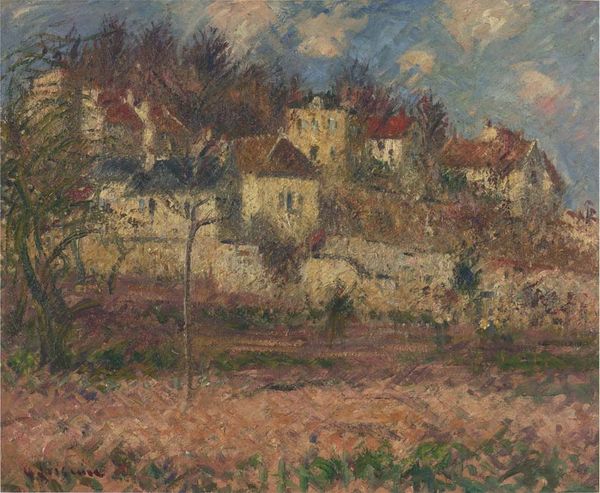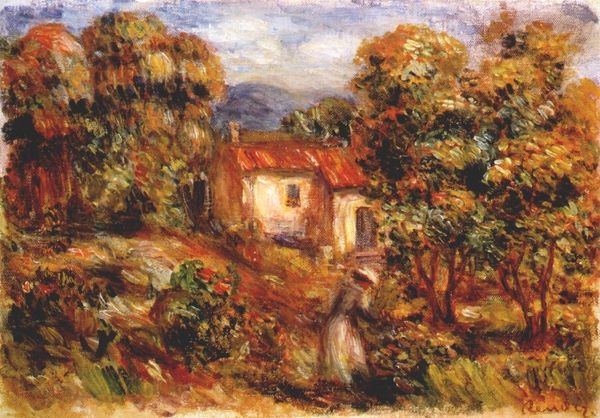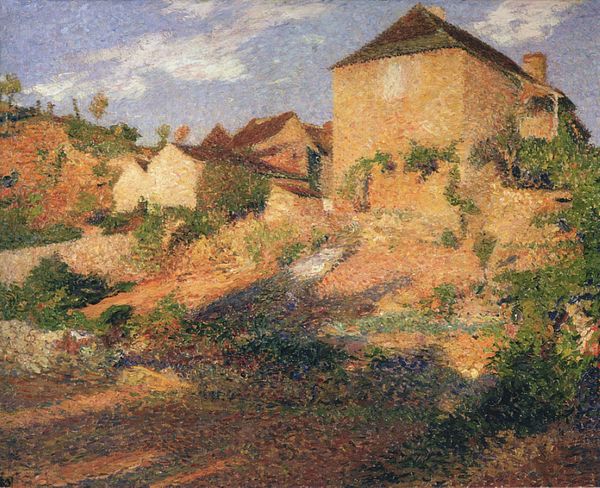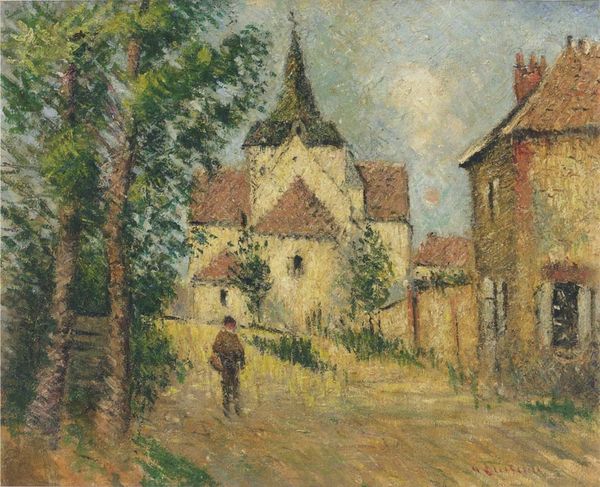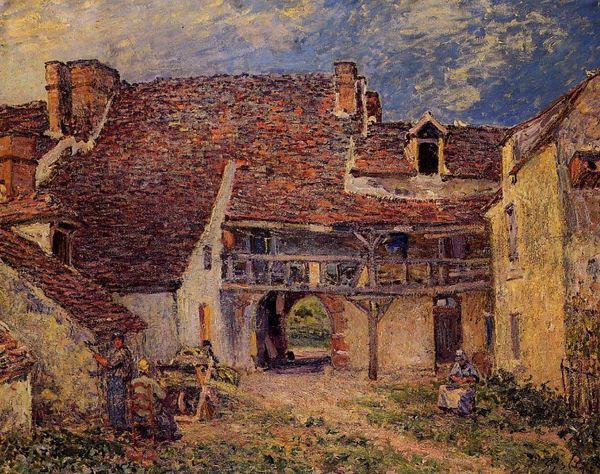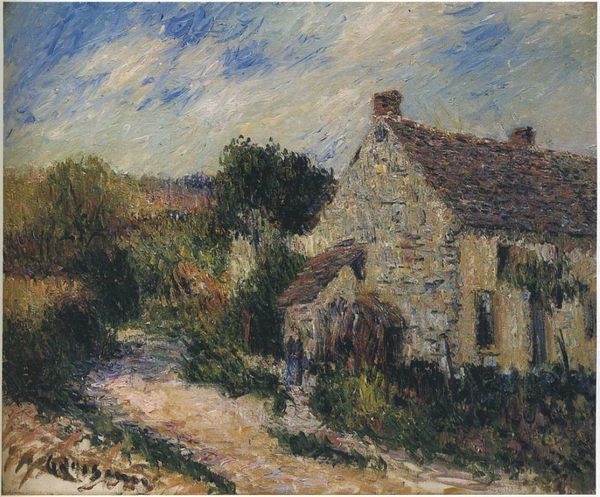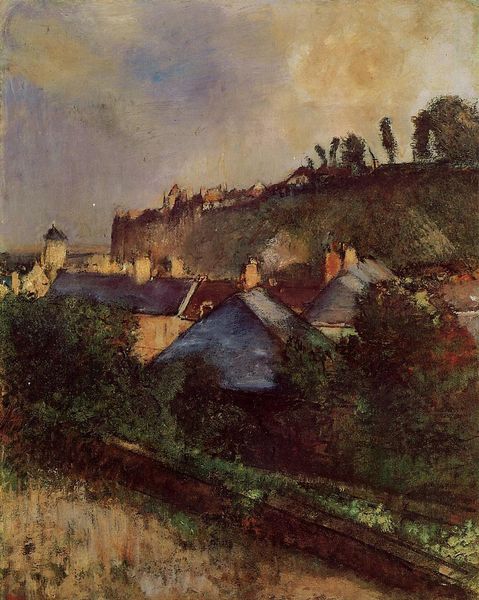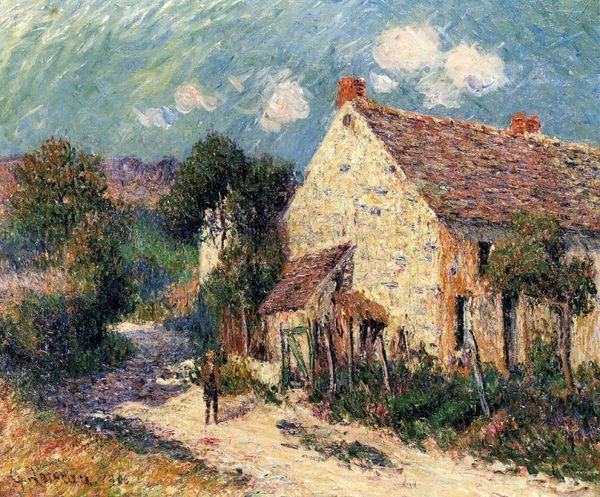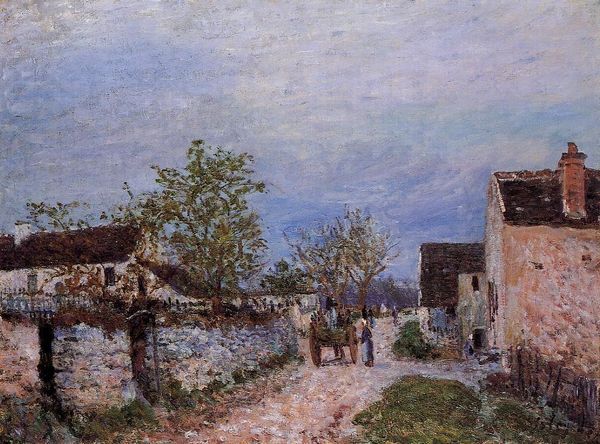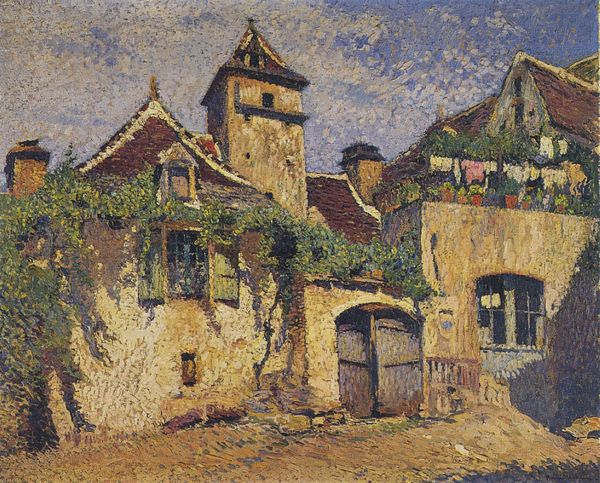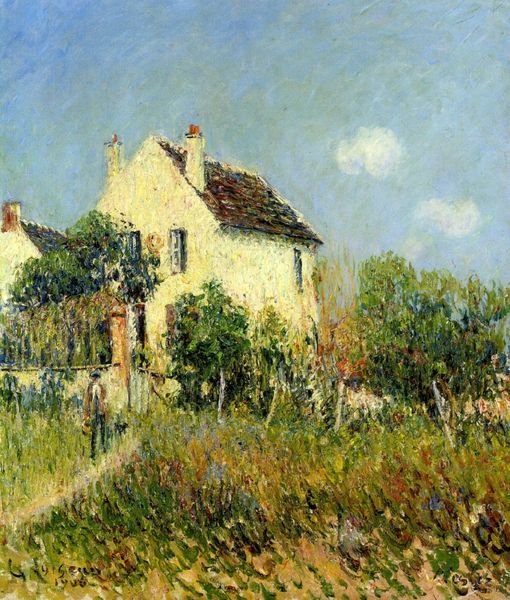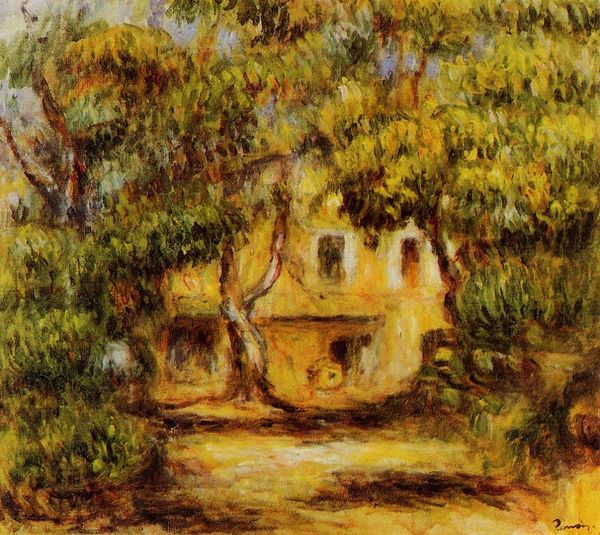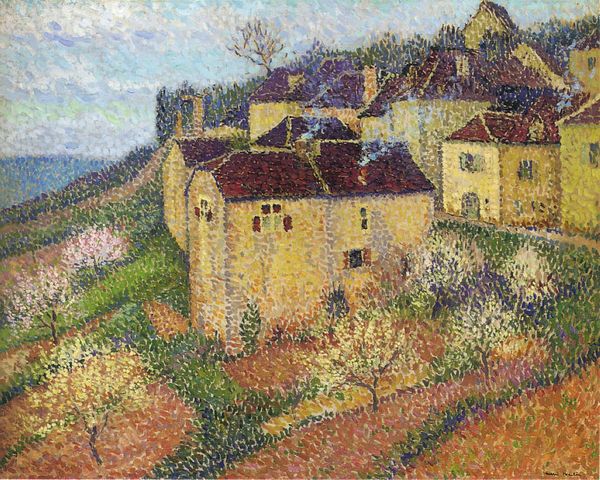
plein-air, oil-paint
#
impressionism
#
plein-air
#
oil-paint
#
landscape
#
impressionist landscape
#
oil painting
#
cityscape
Dimensions: 73.2 x 59.4 cm
Copyright: Public domain
Curator: Camille Pissarro’s “Les Mathurins, Pontoise,” painted in 1877, presents a scene in the French countryside rendered with the distinct touch of Impressionism. Editor: My first thought is how soft and dreamy this piece feels. The light, the blurred edges...it almost dissolves before my eyes. There's a tangible weight to the land in the lower right corner. Curator: Indeed. Pissarro was deeply committed to capturing the fleeting effects of light and atmosphere. We see that in his broken brushstrokes, the layering of color to depict the sky, and of course his choice to paint en plein air. This method became critical, moving painting from the studio to the source. Editor: And speaking of that source, the location is everything. Pontoise, a working-class area outside Paris—not exactly the typical picturesque view celebrated at the Salon. It's refreshing to see this dedication to representing the actual place of work for so many at the time, immortalizing a scene with all the mud and imperfection involved in manual labor and urban sprawl. Curator: The composition too is subtly complex. The buildings in the center, the suggestion of a village or cityscape, are framed by natural elements. He deliberately balances the constructed world with the organic. Look at how he juxtaposes that roughly worked hillside, teeming with heavy materiality, with the delicate hues that define the architecture. Editor: Yes, that deliberate positioning emphasizes a social reality – a tension between the built environment, its resource extraction and the daily lives lived. It’s fascinating how Pissarro manages to communicate so much with such light brushwork and dedication to form and observation. I keep wondering how many farmhouses had to be torn down for that church! Curator: A fair assessment. It allows us to think of Impressionism as more than just surface appearances but as an aesthetic project deeply implicated in social commentary. Editor: Exactly! And Pissarro, by grounding himself in that material reality, challenges notions of what is ‘worth’ painting. Curator: It certainly lends the work greater intellectual heft, enriching the aesthetic experience with questions regarding artistic labor and context. Editor: Right. Next time I’ll come visit ready to work in these fields. Thanks.
Comments
No comments
Be the first to comment and join the conversation on the ultimate creative platform.
